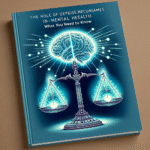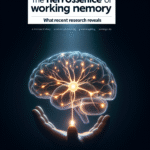
Uncovering Hidden Challenges: Conducting Learning Disability Tests at Home – The Ultimate Guide
Introduction
In an age where education is highly emphasized, the importance of identifying learning disabilities cannot be overstated. Millions of children and adults face unseen barriers that hinder their academic and social success. For many families, a visit to a professional psychologist or educational specialist to conduct learning disability tests can feel like an insurmountable challenge. However, uncovering hidden challenges: conducting learning disability tests at home is not just feasible; it’s essential for early intervention and support.
Identifying learning disabilities early in life can lead to effective strategies that promote positive outcomes. This guide will explore the various facets of conducting learning disability tests at home, offering valuable insights, practical tips, and real-world case studies that highlight the impact of home-based assessments. Whether you are a parent, educator, or caregiver, this comprehensive resource will provide you with the tools you need to navigate the complexities of learning disabilities effectively.
Understanding Learning Disabilities
Before diving into the specifics of conducting tests, let’s clarify what learning disabilities are. Learning disabilities are neurological disorders that affect the brain’s ability to receive, process, store, and respond to information. They can manifest in various ways, including difficulties with reading (dyslexia), writing (dysgraphia), and mathematics (dyscalculia).
The Importance of Early Detection
Detecting learning disabilities early can significantly influence a child’s educational trajectory. Early intervention often results in improved academic performance, better self-esteem, and reduced frustration for both the child and the family. The process of uncovering hidden challenges: conducting learning disability tests at home can kickstart this journey.
Setting the Foundation for Home Testing
Creating a Conducive Environment
The first step in conducting learning disability tests at home is to create a distraction-free and supportive environment. Here are some tips to set the stage:
- Choose a Quiet Space: Select a room that minimizes background noise and distractions.
- Gather Necessary Materials: Have all testing materials ready, including paper, colored pencils, and any worksheets needed for the assessment.
- Establish a Routine: Set aside regular time slots for testing to create familiarity and reduce anxiety.
Selecting Appropriate Tests
Many standardized tests assess learning disabilities, and while professionals typically administer them, some can be adapted for home use. These tests help to gauge a child’s reading, writing, and mathematical abilities.
-
Reading Assessments:
- Gray Oral Reading Tests: These measure reading fluency and comprehension.
- Woodcock-Johnson Tests of Achievement: A comprehensive battery focusing on multiple areas of learning.
-
Writing Assessments:
- Writing Sample Analysis: Encourage the child to write a story or a paragraph, assessing their spelling, grammar, and coherence.
- Holistic Scoring Guidelines: Develop criteria to evaluate uniqueness, mechanics, and content.
- Mathematics Assessments:
- Basic Math Computation Assessments: Use worksheets focused on addition, subtraction, multiplication, and division.
- Applied Math Worksheet: Involve real-life scenarios that require math skills.
Real-World Case Studies
Case Study 1: Anna’s Journey with Dyslexia
Anna, a 10-year-old girl, struggled with reading and often felt discouraged. After conducting a simple reading assessment at home using the Gray Oral Reading Test, her parents were able to identify her reading level. This assessment allowed them to research effective intervention strategies suited to her needs, vastly improving her confidence and performance in school.
Analysis
Anna’s case illustrates how vital home testing can be in identifying specific issues and implementing tailored strategies, leading to meaningful advancements in her academic journey.
Case Study 2: Ben’s Mathematical Challenges
Ben, an 8-year-old boy, exhibited difficulties with basic math concepts. His parents devised a series of worksheets that were both challenging yet engaging. Post-assessment using these worksheets, they discovered he had issues with number sense. With this knowledge, they adapted their home tutoring techniques, focusing on hands-on activities like using physical objects to teach math concepts.
Analysis
This case highlights the adaptability hidden in home testing. By recognizing Ben’s distinctive struggles, his parents could adjust their teaching methods to improve his understanding, showcasing the practical advantages of conducting learning disability tests at home.
Interpreting Test Results
Once the tests are complete, the next step is interpreting the results. Here are some guidelines:
Analyzing Scores
- Compare Results with Norms: Understand where your child’s scores fall relative to age-appropriate benchmarks.
- Identify Patterns: Look for specific areas of strength and weakness. A child may excel in one subject while struggling in another, providing insight into their unique learning profile.
Seeking Professional Guidance
While home tests are invaluable, it’s crucial to consider consulting with an educational psychologist for a comprehensive evaluation. They can assist in interpreting the data, recommend further testing, and help develop IEPs (Individualized Education Plans) if necessary.
Challenges of Conducting Home Tests
Even with the benefits of uncovering hidden challenges: conducting learning disability tests at home, several challenges may arise. Here are some common obstacles and strategies to overcome them:
Emotional Impact
Parents may find themselves weighing the emotional toll testing can take on their children. Anxiety or frustration during testing can skew results. It’s essential to approach testing with empathy and encourage breaks if needed.
Limited Resources
Many standardized tests may not be readily available for home use. However, educators and testing professionals can often provide alternative resources that meet similar goals without sacrificing reliability.
Difficulty with Self-Assessment
Recognizing the challenges your child faces can be difficult. Remaining objective is vital; enlist the help of a trusted teacher or counselor to ensure your perception is aligned with reality.
Enhancing Test Effectiveness
Incorporating Technology
With access to numerous educational apps and online assessments, leveraging technology can elevate the testing experience. Consider tools that adapt to your child’s level, offering personalized feedback.
Using Visual Supports
Visual aids can enhance understanding and retention. Charts, graphs, and pictures can be instrumental in illustrating mathematical concepts and can also break down complex reading and writing tasks.
Conclusion
Uncovering hidden challenges: conducting learning disability tests at home is not just a process; it’s a commitment to understanding and supporting our children. By recognizing the nuances of learning disabilities and employing effective testing strategies at home, parents can pave the way for greater academic success and emotional resilience in their children.
Empower yourself with knowledge, reach out, collaborate with professionals when necessary, and remember the vital role you play in your child’s educational journey. It is not just about identifying challenges but also about championing their capabilities.
FAQ Section
1. How can I tell if my child has a learning disability?
Look for signs such as difficulty in reading, writing, math, or following directions. Observing consistent struggles compared to peers can be an indicator that assessment may be needed.
2. Are home tests as reliable as professional assessments?
While home tests can provide initial insights, they may lack the rigor and standardization of professional assessments. Use them as a starting point, but consider seeking a professional evaluation for a comprehensive understanding.
3. What specific resources should I use for home testing?
Look for resources such as the Gray Oral Reading Tests or the Woodcock-Johnson Tests, which can give a good indication of a child’s abilities and areas that need support.
4. How can I reduce anxiety during testing?
Create a calm environment, use positive reinforcement, and practice relaxation techniques before and during the assessment process to help reduce anxiety.
5. What should I do if I notice learning difficulties?
Keep communication open with your child, consult with their teachers, and consider professional guidance for further assessment and intervention strategies.
By equipping yourself with knowledge and understanding, you can effectively support your child through the journey of discovering their unique learning profile and fostering an environment where they thrive.
















